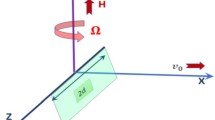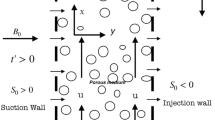Abstract
Human thermal plume is quite important to the study of airflow organization in the indoor environment, especially in the micro-environment research such as personalized ventilation, infectious disease transmission through air, etc. In order to investigate the unsteady fluctuation of the thermal plume around human body, a series of transient numerical simulations are conducted in this study. Numerical simulation based on 9.7 million grids and 0.02 s time step is performed to obtain the detail quantitative data of flow field. The obvious fluctuation and separation are captured in the upper flow region of human body based on the high resolution grids. The maximum time-averaged velocity of the thermal plume is found to be 0.25 m/s while the maximum fluctuate velocity is about 0.07 m/s. The further analysis of frequency spectrum shows that the thermal plume around the body is mainly dominated by the low frequency fluctuation which is lower than 1 Hz and the principal frequency is around 0.1 Hz. In order to overcome the drawback of the high computation cost for application of the engineering simulation, a new numerical simulation method combining a modified k–ε turbulence model and coarse grids is presented. This modified k–ε model can reduce the calculation error of Reynolds stress in the flow region of natural convection through redefining the turbulence viscosity coefficient segmentally and avoid a high numerical viscosity appeared due to the central difference scheme. It can reasonably predict the general fluctuation velocity and the frequency distribution during simulation process in coarse grids and show a huge potential to be applied to the engineering application.
Similar content being viewed by others
References
ANSYS (2011). ANSYS Fluent Theory Guide-20.3.2. ANSYS Inc, USA.
Betts PL, Bokhari IH (2000). Experiments on turbulent natural convection in an enclosed tall cavity. International Journal of Heat and Fluid Flow, 21: 675–683.
Choi S-K, Kim S-O (2012). Turbulence modeling of natural convection in enclosures: A review. Journal of Mechanical Science and Technology, 26: 283–297.
Craven BA, Settles GS (2006). A computational and experimental investigation of the human thermal plume. ASME Journal of Fluids Engineering, 128: 1251–1258.
Gao N, Niu J (2004). CFD study on micro-environment around human body and personalized ventilation. Building and Environment, 39: 795–805.
Gao NP, Niu JL (2005). CFD study of the thermal environment around a human body: A review. Indoor and Built Environment, 14: 5–16.
Gupta JK, Lin CH, Chen Q (2011). Transport of expiratory droplets in an aircraft cabin. Indoor Air, 21: 3–11.
Launder BE, Spalding DB (1974). The numerical computation of turbulent flows. Computer Methods in Applied Mechanics and Engineering, 3: 269–289.
Li J, Cao X, Liu J, Wang C, Zhang Y (2015). Global airflow field distribution in a cabin mock-up measured via large-scale 2D-PIV. Building and Environment, 93: 234–244.
Marr DR, Spitzer IM, Glauser MN (2008). Anisotropy in the breathing zone of a thermal manikin. Experiments in Fluids, 44: 661–673.
Marr D, Higuchi H, Khan T, Zhang J, Glauser M (2005). On particle image velocimetry (PIV) measurements in the breathing zone of a thermal breathing manikin. ASHRAE Transactions, 111(2): 299–305.
Rim D, Novoselac A (2009). Transport of particulate and gaseous pollutants in the vicinity of a human body. Building and Environment, 44: 1840–1849.
Sørensen DN, Voigt LK (2003). Modelling flow and heat transfer around a seated human body by computational fluid dynamics. Building and Environment, 38: 753–762.
Trias FX, Soria M, Oliva A, Pérez-Segarra CD (2007). Direct numerical simulations of two-and three-dimensional turbulent natural convection flows in a differentially heated cavity of aspect ratio 4. Journal of Fluid Mechanics, 586: 259–293.
Wang H, Zhai ZJ (2012). Analyzing grid independency and numerical viscosity of computational fluid dynamics for indoor environment applications. Building and Environment, 52: 107–118.
Wang H, Zhai ZJ, Liu X (2014). Feasibility of utilizing numerical viscosity from coarse grid CFD for fast turbulence modeling of indoor environments. Building Simulation, 7: 155–164.
Zhang Z, Chen X, Mazumdar S, Zhang T, Chen Q (2009). Experimental and numerical investigation of airflow and contaminant transport in an airliner cabin mockup. Building and Environment, 44: 85–94.
Zhang ZS, Cui GX, Xu CX (2005). Theory and Modeling of Turbulence. Beijing: Tsinghua University Press. (in Chinese)
Zhang Z, Zhang W, Zhai ZJ, Chen QY (2007). Evaluation of various turbulence models in predicting airflow and turbulence in enclosed environments by CFD: Part 2—Comparison with experimental data from literature. HVAC&R Research, 13: 871–886.
Zukowska D, Melikov A, Popiolek Z (2007). Thermal plume above a simulated sitting person with different complexity of body geometry. In: Proceedings of Roomvent 2007 Conference, Helsinki, Finland.
Zukowska D, Melikov A, Popiolek Z (2012). Impact of personal factors and furniture arrangement on the thermal plume above a sitting occupant. Building and Environment, 49, 104–116.
Author information
Authors and Affiliations
Corresponding author
Rights and permissions
About this article
Cite this article
Liu, Y., Zhao, Y., Liu, Z. et al. Numerical investigation of the unsteady flow characteristics of human body thermal plume. Build. Simul. 9, 677–687 (2016). https://doi.org/10.1007/s12273-016-0296-1
Received:
Revised:
Accepted:
Published:
Issue Date:
DOI: https://doi.org/10.1007/s12273-016-0296-1




